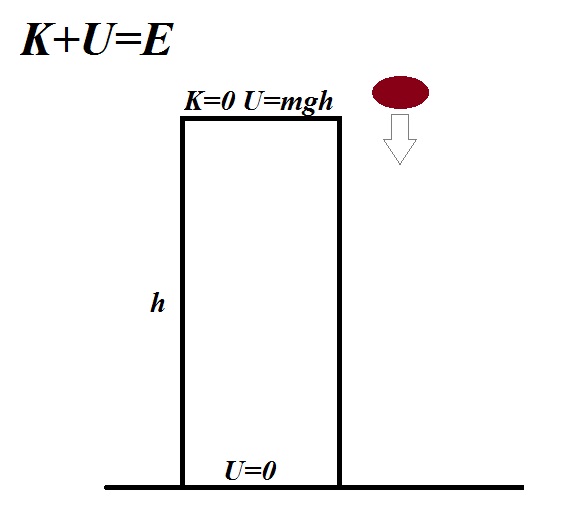A 2kg rock is released from rest at a height of 29m. Ignoring air resistance, what is the kinetic energy, gravitational potential energy, and total mechanical energy at each of the following heights: 20m; 15m; 5m; 9m ?
1 Answer
I tried this:
Explanation:
Let us consider the diagram where the zero level for Gravitational Potential Energy is at the ground level:

At the releasing point the rock is at rest (velocity zero) so that Kinetic Energy will be zero while (Grav.) Potential Energy will be:
The Total Mechanical Energy will be the sum between Kinetic and Potential Energy and will be conserved (will remain the same) all along the entire fall:
At
BUT the Total Mechanical Energy will be again the same
rearranging:
Now you can try the same approach at each new height (15m, 9m, 5m) and you`ll see that while the Potential Energy decreases the Kinetic Energy increases up to the impact in the ground where Potential Energy will be zero while Kinetic Energy will have the value of

